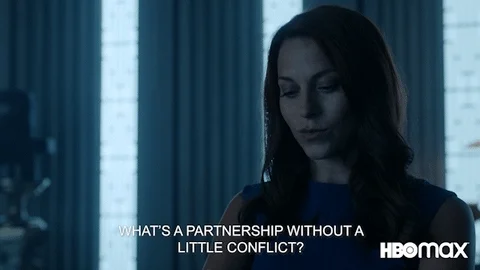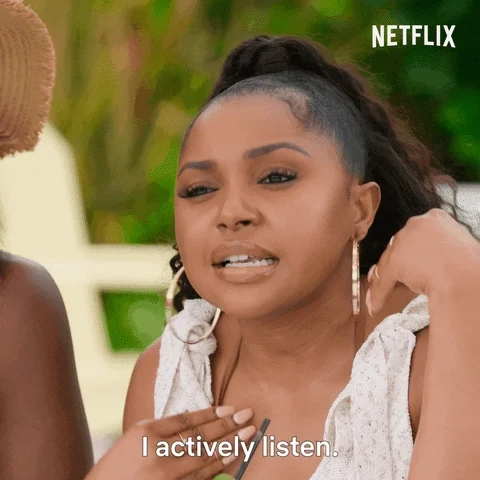
This logo isn't an ad or affiliate link. It's an organization that shares in our mission, and empowered the authors to share their insights in Byte form.
Rumie vets Bytes for compliance with our
Standards.
The organization is responsible for the completeness and reliability of the content.
Learn more
about how Rumie works with partners.
Have you ever had disagreements with your partner about money matters? Or clashed with your roommates over household chores? Maybe you've had conflicts with colleagues due to differing work styles?

By using interpersonal communication strategies, you can enhance your understanding about other people and find solutions to conflicts.
What Is Interpersonal Communication?
Verbal like using words to share information, thoughts, and feelings
 Photo by sporlab on Unsplash
Photo by sporlab on UnsplashNon-verbal like facial expressions, body movements, posture, and gestures
 Photo by Chinh Le Duc on Unsplash
Photo by Chinh Le Duc on UnsplashWhen encountering conflicts in your life, applying interpersonal communication strategies can be helpful in achieving effective resolution.
Tip #1: Practice Active Listening
Tip #2: Pay Attention To Non-Verbal Communication

Observe and adjust.
Observe the non-verbal cues of the other person and tailor the way you respond. If you notice that the other person is becoming agitated, you can adjust your tone to help create a calmer environment.

Be Aware Of Your Own Emotions
You might display your heightened emotions in your non-verbal cues during a tense exchange. Recognize your personal physical responses during a dispute and tune them:
Are you looking directly at the person to show your interest?
Are you crossing your arms across your chest?
Tip #3: Balance Empathy With Assertiveness
By combining empathy and assertiveness, you can create a balanced approach to conflict resolution that promotes understanding and the exploration of mutually beneficial solutions.

Be assertive but calm.
When you state your point of view:

Don't be aggressive.
Don't blame, criticize or accuse.
Meet Amanda
During Amanda's first month as a project lead, she senses that one of her team members, Blake doesn't seem to enjoy working with her. Sure enough, she receives an email from Blake, where he points out some disagreements with the project direction.

Amanda meets Blake and he begins expressing his views. However, it's clear that Blake has incorrect information due to his absence from several group meetings.
What should Amanda do?
A: Stop Blake, tell him he’s right, and explain what has already been done to address the points.
B: Listen silently while crossing her arms with her fist clenched. Think about questions to ask him.
C: Consider why Blake might've missed the meetings and ask him how she could better communicate information to him.
D: Acknowledge Blake’s points and tell him there wouldn't be this conflict if he had attended the meetings.
Quiz
What should Amanda do to resolve the conflict?
A: When you’re trying to resolve a conflict, you should avoid interrupting the speaker. B: Pay attention to your body position, you might send a message that you are uninterested in what the speaker has to say. C: You’re demonstrating empathy as you’re thinking from Blake’s perspective. D: It’s best to avoid blaming or criticizing to prevent escalation of conflict.
Take Action
Resolving conflicts can be a complex process that requires taking into account the different personalities of the people involved. However, using interpersonal communication strategies can be a first step towards better understanding.

This Byte has been authored by
Melissa Tan
Learning Designer








